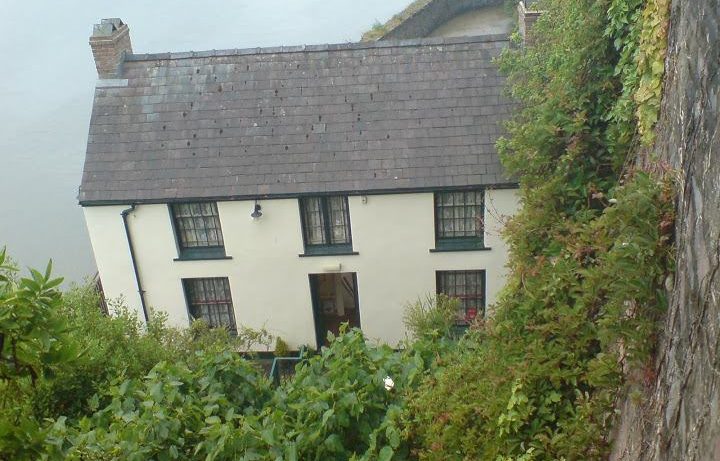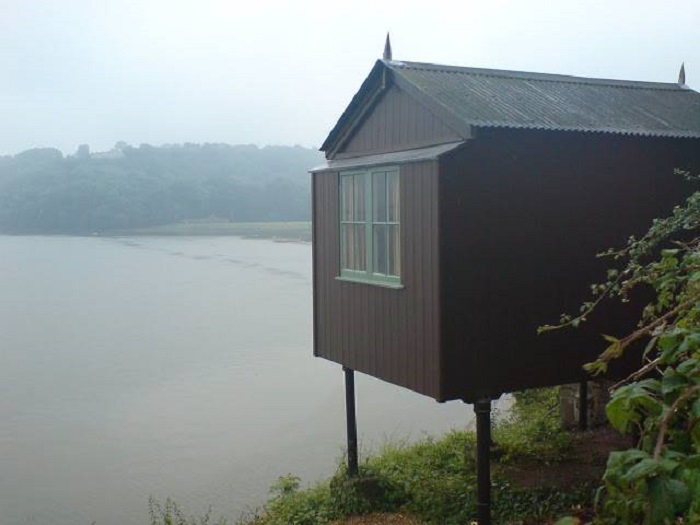Laugharne is the main borough in the Laugharne Township, located in the county of Carmarthenshire – South-West Wales. With its population hovering around 1000, this charming town retains the feel of a small village whilst competing with the attractions of any major city. The town, sitting on the Afon Taf estuary and flanked by rural scenery, is perhaps best known for its connection to the noted Welsh poet and writer Dylan Thomas who resided here in the 1940s.
Fond viewers of the BBC series Keeping Faith may recognise the distinctive little town, as many scenes were filmed in the town and the surrounding area.
Dylan Thomas
One of Wale’s most celebrated poets, Dylan Thomas was born in 1914 and spent the latter part of his life in Laugharne (a village back then.) In 1934 he visited Laugharne with friend and fellow poet Glyn Jones (best known for his criticism of Anglo-Wlesh literature, entitled The Dragon has Two Tongues.) Something about the quaint village charmed him, and he moved here with his wife four years later. He later relocated to the boathouse property in 1949, his best-known residence, and remained there until his death in 1953.
Thomas described Laugharne as a “timeless, mild, beguiling island of a town.”
He went on to write part of Under Milk Wood here, a play that became the most influential of all his work; the fictional town of Llareggub, described vividly n the play, was inspired by Laugharne.
The Boathouse
Photo: GBC
Although he only spent around four years in the boathouse, from 1949 to 1953, it is his most well-known residence.
The boathouse has since become a museum documenting the writer’s life. Every year, around 15,000 visitors flock to see a showcase of memorabilia and a reconstruction of Thomas’ living quarters, accompanied by Thomas’ voice reciting his work in the background. A popular spot is Thomas’ writing shed, where most of his writing took place. An untidy desk, littered with doodles and scribbled notes, gives visitors a supposed glimpse into Dylan Thomas’ late-night working habits.

Set on a cliff, overlooking the calm waters of the Tâf estuary and set in the ambience of the surrounding rural scenery, it is no wonder that Thomas was able to write some of his best work here. The poem Over Sir John’s Hill was an ode to the estuary and the inspiration he found in it.
The museum also contains a little tearoom with a great view of the estuary. You can almost imagine Thomas sitting in the same spot, sipping tea whilst enjoying his view, finding inspiration in the wildlife and changing seasons.
He described his home like this:
“For this place I love and where I want to work… this is it: the place, the house, the workroom, the time. All I shall write in this water and tree room on the cliff, every word will be my thanks to you. You have given me a life. And now I am going to live it.”
The Dylan Thomas Birthday Walk
Poem in October is a poem Dylan Thomas wrote whilst living in Laugharne. It documents a day in autumn – his 30th birthday – where he walks up a hill in a bid to reclaim the frivolous joys of childhood, touching on discussions of childhood, getting older, and spirituality. His love of Laugharne can be heard through the lines of his poem.
Source: Youtube Wdan Coyle
It is possible to follow the very same route he walked and truly appreciate his words. The 2-mile walk starts in the Laugharne harbour car park and goes up to Sir John’s hill. The walk offers fantastic views of the estuary.
The start of a famous brand…
Dylan Thomas isn’t the only recognisable name to come from Laughlarne. Before the town’s main industry became tourism, and after the fishing industry in nearby Carmarthen Bay died down, the cockle industry was a large part of Laugharne’s economy.
This is where the popular and widely recognisable pickling firm Parsons originated, starting with their pickled cockles.
Town itself
Even without the status of Dylan Thomas’ home, the town stands on its own as a charming place worth checking out. The picturesque town has a typical main street lined with cottages and traditional pubs, including Brown’s hotel, where Dylan Thomas used to drink. The town has a traditional feel, with a total of 69 listed buildings. From the photogenic island house, the oldest residence in town, to the town hall, with its distinctive Italianate bell tower and past as a small prison, the town is brimming with character. The grand Georgian townhouse Castle House, a grade II listed building, was described by Dylan Thomas as “the best of houses in the best of places.”
St Martin’s church
A centrepiece of Laugharne is St Martin’s church, built in the 14th century by Sir Guido de Brian, also known as Lord of the Manor of Laugharne. Most notably, Dylan Thomas and his wife are buried here, side by side. Thomas’ grave is marked simply, with a white cross on his headstone.
Inside, a cross-shaped slab dating back to the Dark ages is the focal point of the church. A historic gem from the 9th or 10th century, the slab is carved with an unusual Celtic design that may have Viking origins. Decorated with thick interlacing ropework that runs around the edges and the cross-head, it is something to be marvelled at.
Laugharne Castle
South of the church, a grand site of a 12th-century stone castle rises over the estuary. These Norman ruins are in surprisingly good shape – as far as ruins go – and the castle retains its original two towers.
Originally known as Abercorran Castle, the castle was founded in 1116 as part of a chain of coastal defensive castles in the area. This castle was captured many times, first by Lord Rhys in 1189, then by Prince Llywelyn ap Iorwerth who rebuilt the castle in 1215, and later succeeded by Prince Llywelyn ap Gruffudd in the mid-13th century. It was captured yet again during the civil war.
Elizabethan courtier Sir John Perrot fixed up the crumbling ruins in the late 19th century; he later died in the Tower of London, awaiting his execution after being convicted of treason. Some historians believed he was poisoned. Despite the many attacks, the castle is still in good condition and worth visiting.
Dylan Thomas wrote Portrait of the Artist as a Young Dog on the site, in the castle’s summerhouse.
Laugharne Weekend
Considering Laugharne’s association with literature and poetry, it’s no wonder that the Laugharne Weekend began in 2007. The Laugharne Weekend is a literacy and arts festival held every spring. The festival is a three-day celebration of literature, poetry and comedy, with an emphasis on Welsh-originated works.
The event is deliberately small-scale, creating an intimate setting where locals have a chance to connect with local talents and share opinions. The event is limited in capacity for this reason, and is spread across the town’s clubs, churches and halls.
Laugharne is a charming town, worth checking out for its historic buildings and, of course, its literacy connections.


